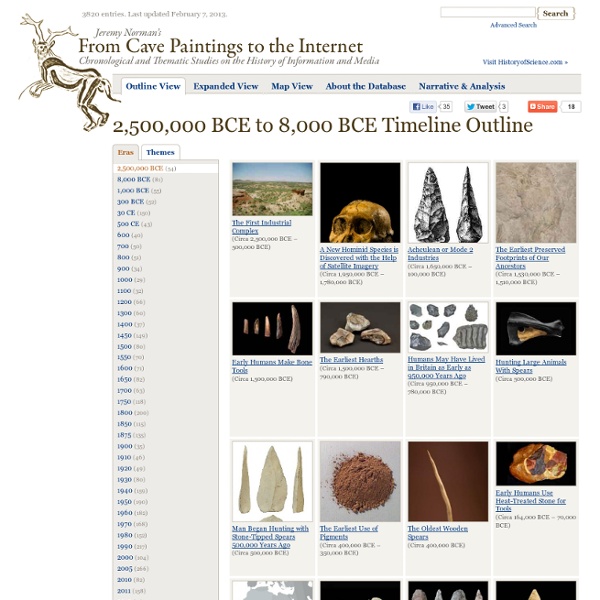2,500,000 BCE to 8,000 BCE Timeline : From Cave Paintings to the Internet

World History for Us All: Teaching Units
Home > This model curriculum groups instructional units into three categories. The criterion for these categories is the scale in time, geographical space, and subject matter of the topics to be explored. This system has been designed to guide teachers and students in study of the past on a variety of scales, from broad, global changes to developments that occurred within regions, civilizations, or nations. All teaching units follow standard specifications for organization and design. The table below provides links to teaching units on the site or under development.
Related:
Related:



